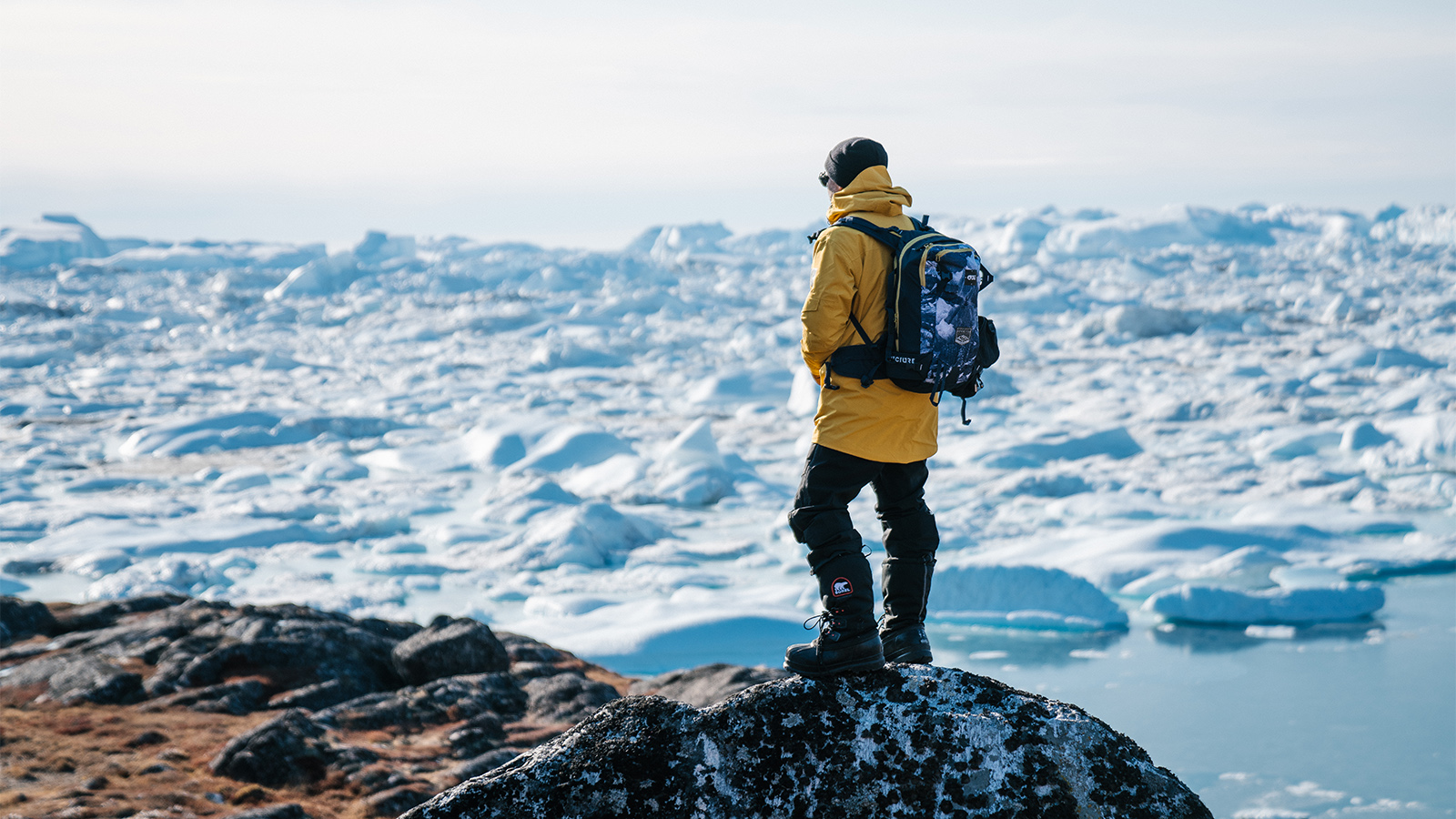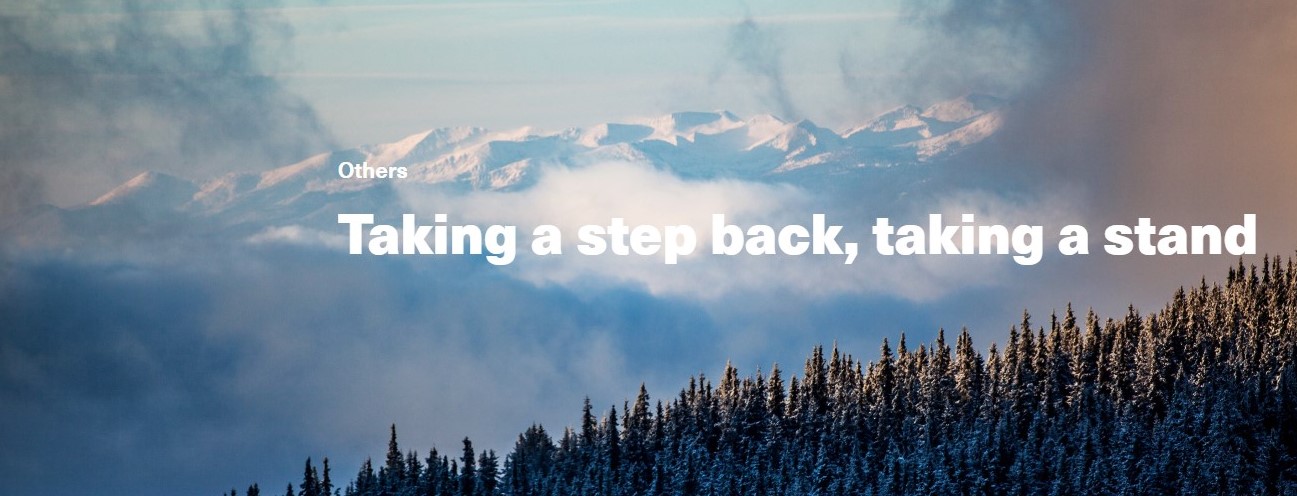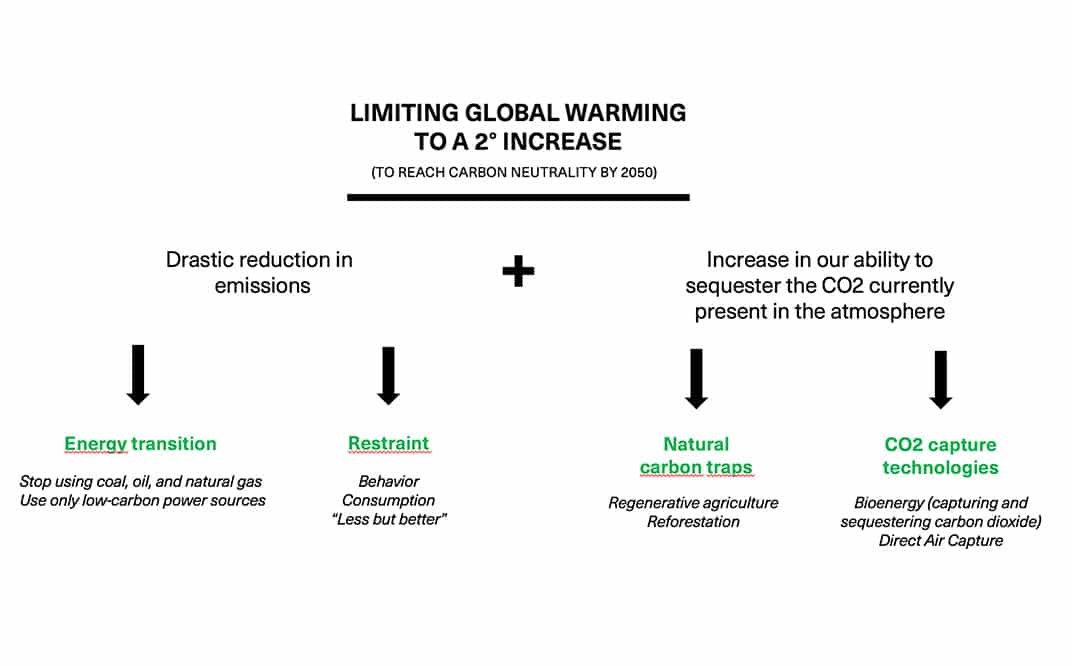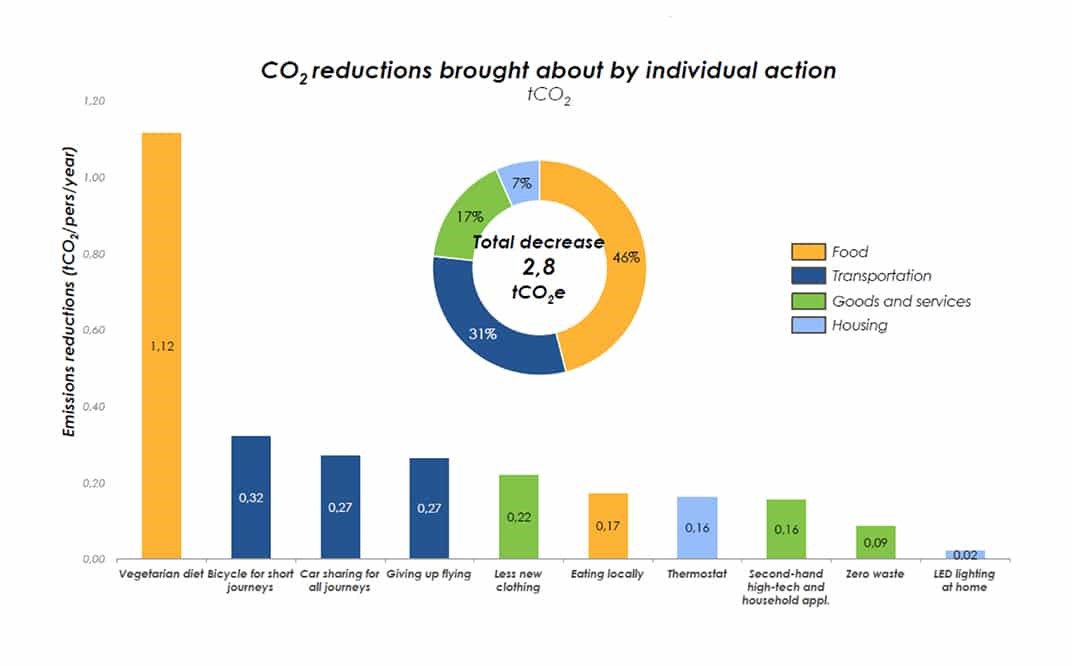
Picture Thinks About The Future After Lockdown
Picture, a B Corp certified company, has taken advantage of the lockdown to review possible, plausible actions that can be taken by society and businesses to lower CO2 emissions once lockdowns are lifted.

For Picture, the stay-at-home lockdown also has its upside, offering us the chance to take a step back to reflect about the future that we would like to see (and the one we would prefer not see) after the lockdown is finally lifted.
Here is our very humble point of view.
The sheer scale of the current worldwide pandemic means that it will leave a before in its wake, forcing us to face a brand new after. Since this “after” entails a great deal (read a lot) of uncertainty, why not start right away in trying to shape it as much as possible.
During the financial crisis of 2008, a quote from the Obama administration underlined the importance of viewing the dire situation as a genuine opportunity, “Never allow a crisis to go to waste.”
The goal was to learn as many lessons as possible from the situation.
In 2020, the quote rings truer than ever. Writing an “afterwards” is just as relevant. We need to prepare for the next step and build a more resilient future for everyone:
- We have no desire to experience another health or economic crisis.
- We have absolutely no desire to live through a climate crisis.
The second point, currently staring us right in the face, is what worries us the most. For several years, the IPCC (Intergovernmental Panel on Climate Change) has warned that if we fail to make the drastic changes necessary to limit global warming, the impact on the environment in the mid to long term will be devastating. According to scientific experts, here is an abbreviated list of what several regions around the globe can hope to expect:
- Extreme heat waves, droughts, and a much higher risk of wildfires.
- Water shortages.
- An increase in the number of extreme weather events (hurricanes, etc.)
- Diminishing sea ice in the Arctic, rising sea levels, floods, and certain areas becoming inhabitable for millions of people.
- A severe decrease in air quality.
- A huge loss in the planet’s biodiversity.
All of this will likely cause mass migration for a significant percentage of the world’s populations, as well as other social, health, and geopolitical problems. For the IPCC report, click here.
So, why are individuals, companies, and governments still doing so little?
Probably due to a collective inability to anticipate, plan ahead, and consider climate change as a common problem that we all face together. And yet all over the globe, certain events like heat waves continue to grow in number and severity year after year as the ski season just about everywhere continues to shorten. Is it that these changes are not tangible enough, or dangerous enough to our health, or close enough together to make us notice?
Sure, until now, the effects global warming have not had the same effect depending on the country or region, yet it goes without saying that local emissions have an impact both locally and on the other side of the world. Ditto for how we consume goods and services. To become more empowered and responsible, we need to start thinking of the planet as a single entity that everyone should strive to preserve and protect. If human kind’s inability to anticipate is its greatest weakness, then we have no other choice but to work consciously together to push beyond this limitation.
The corona virus has a certain immediacy and transient aspect so completely different from climate change. The corona virus is impacting our lives right now. It is even in some of us. Governments have therefore taken radical, unprecedented, and extraordinary measures to solve the problem. This in itself should remind us of the central role they play, and that their choices have major repercussions both positive and negative. Does this mean that we are wholly dependent on them in the fight against the climate “virus”? Not entirely, since the climate is everyone’s concern and we all have to act. However, it is clear that only governments have the power and authority to fight climate change on a global scale. Given these circumstances, every government should make the environment a high priority, and guarantee a place for environmental education in every primary, secondary, and university system.
Preserving our health seems to be the current benchmark for our ability to act (or react). Yet human activities have already had a major negative impact on our health.
The way we have decided to populate our planet is not without its consequences. The current outbreak demonstrates that our chosen lifestyle can and will turn against us if we are not careful.
Several scientific papers and journals have already reported on the clear connection between human activity, the pressure we have put on ecosystems worldwide, and the emergence of the new corona virus. Deforestation to benefit industrial agriculture and livestock farming is the reason behind the massive migrations of several species of animal that potentially carry the virus.
Under normal circumstances, these animals are not supposed to come in direct contact with us (they usually live in harmony with their local environment), but the forced displacement by their hosts (us) often destroys this balance.
This is the case with the corona virus, along with Ebola, HIV, and many other zoonotic diseases. The scientific journal Nature has published a thorough report on the topic, and concludes that: “Finally, our analysis suggests that efforts to conserve areas rich in wildlife diversity by reducing anthropogenic activity may have added value in reducing the likelihood of future zoonotic disease emergence.”
The current crisis serves as a reminder that certain human activities, in addition to affecting the climate also have an impact our health.
This is not news.
We are fully aware of the high death rates caused by air pollution (due to fine particulate matter) in certain big cities and regions, especially in Asia.
A recent study available here talks about a reduction in life expectancy in certain countries over the next few years. Again, the long time frame appears to inhibit our ability to take immediate action.
If we talked instead about the “air pollution pandemic”, would we take the issue more seriously?
Defining “afterwards”
Against all expectations, the corona virus outbreak has created a massive temporary reduction in greenhouse gas emissions. Not surprising, since almost all business, manufacturing, shipping, and travel have come to a screeching halt. Usually, the fossil fuels (coal, oil, and natural gas) burned to produce electricity and energy are the primary sources of worldwide CO2 emissions. They also drive worldwide GDP. Modern society is more or less dependent on them. When we use considerably less fossil fuels, global emissions drop significantly.
Economically speaking, the current pause is not sustainable. We all anxiously look forward to the end of both the lockdown and crisis. But once over, how will we choose to begin again?
After the 2008 financial crisis, the economic stimulus packages implemented by most countries were massive, causing a 5% increase in CO2 emissions. Is this what we really want? How can we avoid resuming the same frenzied pace from before the crisis? How can we reconcile a strong economic recovery with our fight to save the world’s climate? France’s newspaper Le Monde explores several options in this article.
On an individual level, and for Picture, the issues are similar. Our business will pick back up again, our staff will return to the office, manufacturing our jackets made with recycled materials will resume, and shops will reopen.
Thankfully, when it comes to green initiatives, we will not be starting from scratch! Our commitment to the environment and social issues ongoing process of continuous improvement. Our company’s mission – to fight against climate change – is even written into our governing corporate documents. Everyone within the company wants to wipe out our use fossil fuels and bring all of our partners on board. In addition, Picture received B Corp certification in 2019. Their slogan, “Using business as a force for good”, perfectly matches our vision of entrepreneurship.
In spite of it all, is our commitment as a company enough to take on such a massive endeavour?
Obviously not, but we are definitely on the right track. So what is missing? The world needs a clear framework and guidelines for people to act both individually and collectively in a much more effective, speedy, and relevant manner when compared to “before”.
In our case, we need to realign our commitment to fit with the effective actions required to fight against climate change.
The IPCC has already defined this framework and reality, which consist of limiting the increase in global temperatures to +2°C relative to pre-industrial levels.
To ensure a future worth living, we must not exceed this limit. IPCC scientists are the experts, not us! From here on out, we need to manage the company so that we do our part to stay within this limit (further down in this article we explain our plan).
First, what does society need to do on a global scale?
To limit the catastrophic consequences we discussed at the beginning of the article, society as a whole needs to reduce emissions by 4% between now and 2030, and then reach carbon neutrality, aka zero net emissions, by 2050 (striking the perfect balance between CO2 emissions with carbon removal every year).
Let us be perfectly clear, the world is off to a very bad start. Over the last 10 years, emissions have increased by 1.5% per year. In 2019, according to UNEP (United Nations Environment Programme), based on the current commitments by countries worldwide to reduce carbon emissions, we are heading full speed towards a 3.2°C increase in overall world temperatures.
Wonderful…
So, what exactly can we do? How can we significantly, and quickly, reduce our carbon footprint? The IPCC recommends four major actions to implement simultaneously to drastically reduce our emissions while also increasing our ability to sequester the CO2 already present in the atmosphere:
1/ Severely reduce our dependence on fossil fuels (coal, oil, and natural gas) in favour of renewable or (very) low-carbon power sources: solar, wind, geothermal, hydro, biomass, and nuclear (we will not discuss the benefits and drawbacks of nuclear power in this article). Governments play a vital role in ensuring the massive reduction of fossil fuel use worldwide.
2/ Change our behaviour, the pace of daily life, the pace of business, and our consumption and travel habits. This requires discipline and restraint at all levels of society. Both individuals and companies have an extremely important role to play.
3/ Increase our capacity to naturally capture and sequester the CO2 currently present in the atmosphere. We are talking about forests, soils, and wetlands.
4/ Develop carbon sequestering technologies. This does not represent a miracle solution, and will not work without proper implementation of the first three points.
Here is a diagram of what these four actions involve:

While there is a lot of work to do, the good news is that these actions are already part of today’s reality. Considerable advances have been made all around the world.
While we will not delve into the details, here are some of our thoughts:
– Energy transition and restraint are inextricably linked.
Even when exemplary on an individual level, we are often limited by the system if, for example, the train we take to commute to work is powered by coal. The same goes for those recharging their electric cars at a motorway rest stop: it all depends on how the electricity is produced.
– Will massive tree planting and reforestation to capture carbon emissions work?
Without a huge reduction in emissions, it would take reforesting an area the size of France to capture current French CO2 emissions alone. A highly unlikely prospect.
– The notion of restraint forces us to think about our lifestyles and recognise to just what extent our individual behaviour has an impact on the environment. How can we improve? What are the appropriate actions to take to become more “restrained”?
Climate experts from the company Carbone 4 recently released a study to shed light on the topic. A diagram (see below) from the study ranks the most relevant actions needed to reduce our impact as individuals, and at no financial cost.
The calculation is factual and based solely CO2 emissions, and not on any specific or fashionable trends.

Source: Carbone 4
When it comes to individual costs, improving the energy efficiency of our homes and buying a low carbon emissions vehicle are the two other most relevant actions. And if you do not need a car, even better!
How can we apply the IPCC’s 4 recommendations to Picture?
Our detailed roadmap, including major objectives and dates, is currently a work in progress that we will share in the very near future. As mentioned, while not starting from scratch, we will need to manage a very sharp (90°!) turn.
In the meantime, and to conclude, here are several actions, assertions, and questions regarding our commitment as a company. Stay tuned for more details.
Our emissions:
- We are currently in the process of measuring our carbon emissions. We plan to place our entire business under the microscope, and this includes all of our partners. For example, when finished, we will be able to state with certainty that, “the dyeing process for Picture’s technical apparel emits XX kg of CO2 and represents XX% of the company’s overall carbon emissions.”
- The Science Based Targets method* will serve to guide reductions as we do our part contribute to the 2°C objective. Our emissions, the size of our company, and our industry will determine the specific reduction goals for Picture.
- We plan to start offsetting certain residual emissions. This is the third pillar in our Assess-Reduce-Offset project to achieve carbon neutrality.
Our energy transition:
- Approximately one year ago we started the energy transition process throughout our entire business. We realise now that the initial scope of this effort was not broad enough.
- How can we change our partners’ behaviour in countries where there is only one electric company (the state) that has not yet started the transition to using renewable sources of energy?
- Will we have the financial capacity to help our partners produce green energy on their own (such as installing solar panels on their roofs)?
- To wield more influence, we need to work hand-in-hand with other brands and the entire outdoor industry.
- Even though the technical materials we use are either recycled or bio-sourced, they are almost always directly or indirectly related to petroleum-based derivatives.
- We need to integrate greater circularity into product design. We are currently in contact with three providers who have technologies capable of recycling used polyester garments into fabric that we can use to make new ones. In eighteen months, we hope to be able to produce a ski/snowboard jacket using this technology.
- Our new headquarters in Gerzat, France, are under construction. The building will produce a portion of its own energy needs, while the remainder will come from renewable energy providers.
Our reduction efforts:
- At the beginning of 2020, twenty employees volunteered to form eco-teams within the company to reduce energy consumption in our offices, and to improve our overall eating, purchasing, recycling, and reuse habits. Good job!
- We travel a lot to grow the brand around the world and lack a comprehensive, more stringent travel plan for everyone in the company.
- We have been working with repair centres from the very beginning. For the last six months, a project is in the works to provide a lifetime repairable guarantee for all of our products. The project will roll out in France first, and then throughout the rest of the world.
- We have not made much progress when it comes to second-hand, rentals, and consignment. We need to pick up the pace in this area.
- We have always promoted and encouraged purchasing environmentally-friendly, recycled, and organic products, but have made very little noise about responsible consumption.
- We do not yet have the logistics, human, and financial capacity to build manufacturing facilities close to where people purchase our products.
We explain our reasoning here.
Our development:
Picture has considerable growth potential in every one of its markets. Do growth and development of the brand rhyme with restraint? We do not have a steadfast answer to this question. We will discuss our point of view in more detail at another time, but we are very tempted to say that in our specific case, the brand’s growth is legitimate if it serves to fund energy transition, carbon sequestering, and other projects to reduce our impact within and beyond our own business.
Our dream:
One day, will we be able to make a ski jacket that captures more CO2 than it emits during the manufacturing process?
One last word:
We only mentioned snowboarding once in this article. Unacceptable!
Ride for the Future.






